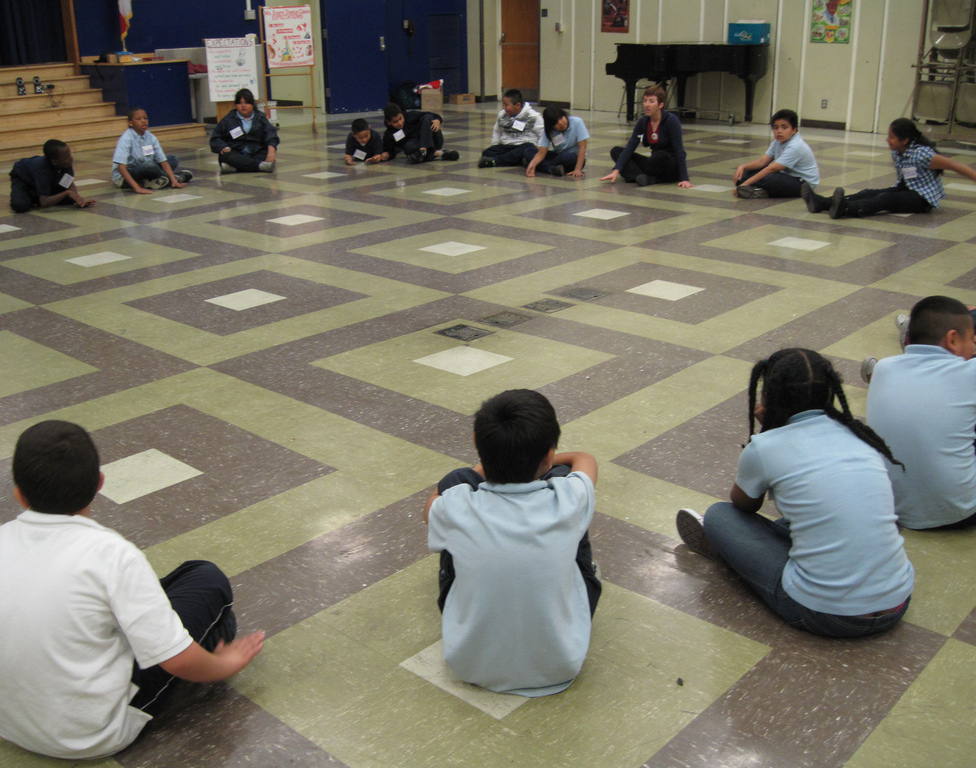 Shana Habel is the Dance Demonstration Teacher for the LAUSD Arts Education Branch. She has been with the program since its inception in 1999.
Shana Habel is the Dance Demonstration Teacher for the LAUSD Arts Education Branch. She has been with the program since its inception in 1999.
“What I’ve seen is the way that being involved in the arts can truly change the way a child thinks about themself, the way they think about their life, they way they think about their future,” she says.
Habel supervises 40 teachers, including Danielle Evers, a dance teacher at Florence Griffith Joyner Elementary in South Los Angeles. Evers has been teaching dance for eight years.
“The important thing about dance education is students have the freedom to be creative, to think out of the box, to be problem solvers, to create something that expresses how they feel,” says Evers.
Wendy is a student at Florence Griffith Joyner. She is 10 years old, and her favorite subject is dance.
“I mostly like the moves, mostly Ms. Evers. She’s a really great dance teacher. I really admire her so much. I hope I could dance as good as her,” she says.
Her classmate Jabari is also a fan of dance class.
“I like dance because I get to learn a lot of new moves and at first I didn’t think of myself as a dancer but now I know I got the potential to be a dancer,” he says.
Both Habel and Evers have seen firsthand how students who lacked confidence or did not excel in other academic areas thrived in the arts. Critical Evidence is a report commissioned by the Arts Education Partnership and the National Assemble of State Agencies in 2005. It cited that arts activities promotes growth in students’ social skills, including self-confidence, self-control, conflict resolution, collaboration, empathy, and social tolerance.
In the end, says Habel, it’s not about whether the student becomes an artist.
“It’s about giving them a different way of looking at things. Giving them new strategies to see the world with. A new pair of eyes,” she says.
Arts advocates can only hope the Los Angeles School Board does not vote blindly on March 13.














